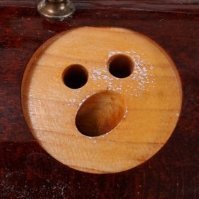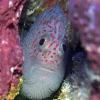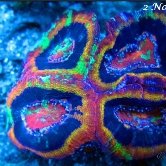Leaderboard
Popular Content
Showing content with the highest reputation since 05/11/2025 in Posts
-
2 points
-
I have mainly LPS, anemone and soft corals, I am not sure about the clam or SPS. But turning the light off for 3-4 days was the most effective way for me, without using chemicals, to control Cyno. I have done it few times without losing any corals. Foxface and 2 bar fish and 4 tuxedo urchins eliminated the bubble and hair algae A good person to reach out to is Richard Ross, last year speaker, who encouraged me to use the light method.2 points
-
I just wanted to thank everyone again for all the love and support you have shown the store while we had our saltwater department. If we can ever help you out, we will still keep frozen foods, salt water, RO water, and pods in stock though. Chris2 points
-
Down to one larva of this age, have four that are about a month longer, but today is day 100 post hatch, and this is from a couple days ago:2 points
-
I've run kalkwasser on and off for decades. Here are my observations. Kalk is a balanced additive. It provides both alkalinity and calcium in the basic 2:1 ratio needed for the hard coral (i.e., SPS) skeleton formation. Details: This ratio is an over-simplication as it doesn't reflect the content of magnesium and strontium in these skeletons. But it's still a good rule-of-thumb for understanding. Kalk (aka calcium hydroxide, or slaked lime) saturates in fresh water at a very, very low level. This limits how much alkalinity you can dose per day. Details: 1.89 grams per liter of fresh water at 0 degrees C, down to 0.77 grams per liter at 100 degrees C. At 25 degrees C (77 F), solubility is 1.59 grams per liter. It's solubility and pH are so well known and happens at such low concentrations that it is actually considered a relatively good standard for pH calibration at high pH levels (pH of 12.54 at room temperature, 77F). It also means that, if you're not running the stirrer in your kalkwasser reactor, you may not have good control of the concentration of the solution. This is IMPORTANT. When stirred with all particulates settled out, a liter kalkwasser is saturated and, at 77F, delivers 808 ppm of calcium and 40.8 milliequivalents of alkalinity to your tank. (Of course, that's diluted by the volume of your tank). That limitation means that, when administered as part of a top-off system (that compensates for evaporation), evaporation limits how much alkalinity you can dose in a day. This limitation may not be a factor in new systems without much consumption (i.e., calcium carbonate (hard coral skeleton) deposition / formation), but in systems with high consumption, is likely to be insufficient and will require additional supplementation (e.g., calcium reactor or two-part dosing). For example, let's say that a 100 gallon (378.541 liters) system evaporates 1 gallon (3.78541 liters) of fresh water per day, and that you're replacing that evaporation with saturated kalkwasser. That means you're adding about 6 grams of kalk total per day - that's enough to form about 8 grams of coral skeleton (calcium carbonate) or about 3 cubic centimeters of skeleton (at most, assuming of the consumption goes to skeleton formation). If your goal is to maintain stable calcium and alkalinity parameters (and it should be once you've reached your targets), then supplementation = consumption. That is, replace what is used. Anything more, and levels in your water will increase. Anything less, and the levels go down. Details:You can use these "trends" in your test measurements to estimate consumption. Over the long term, if you've got corals that are growing and increasing in size, consumption will go up and demands on your supplementation methods will increase. Following this, if you find that your levels are increasing, you need to add less kalkwasser (or increase consumption). Here's the thing, though, if you're adding it as part of your ATO and your evaporation rate is high enough that you're delivering more than is needed, then you basically need to add less kalkwasser. This means less ATO water through the kalkwasser reactor. You really can't - or shouldn't - try adjusting the stirrer on/off times. That's basically going to be a crapshoot as you won't be able to reliably control the concentration of the dissolved kalk in solution (which is one of the key reasons kalkwasser was once highly regarded in the hobby) and you're likely to see your levels fluctuate without much control. You CAN adjust how much ATO water is going through the reactor, but is you're basically running all your ATO through the reactor, reducing this (without compensating with ATO that bypasses the reactor) will only reduce your water level and raise ion concentrations (i.e., salinity). One solution is to abandon kalkwasser for now and move to a two-part approach. Another is to add only as much kalkwasser as is needed, and to supplement the rest of your ATO with fresh water that bypasses the ATO. A third approach is to manage your parameters with water changes during this time when your tank is reasonably young without much growth, and then to switch over to kalk when things are growing more. And yet another is to increase consumption (adding larger, fast-growing corals, changing light management to increase growth, etc.). The first two approaches may require you to invest in dosing pumps, the second being very popular even today. The third was an approach used often a couple of decades ago. (It's still valid.) To reestablish your levels, though, will require that you take your kalk reactor offline (that is, bypass it in your ATO setup) and to let your levels drift down to your target levels. If the system is small enough, you can perform water changes to help move things along. I'm sure that I've missed a few things that I've learned over the years. But, while kalk is great (inexpensive, fairly simple, low-investment setup), I'd encourage you to look at the difficult parts of it. Namely, limited alkalinity delivery (due to low saturation level) and accidental overdosing. The first of these requires that you will eventually make additional investments in other delivery methods while the second means you'll be investing in additional hardware and complexity to manage/reduce the risk of an accident. I still hold kalkwasser in very high regard, but you should go into it with open eyes.1 point
-
We are also trying to set up workshops to help fill the time prior to our guest speaker and to further provide opportunity for education and information. For this meeting, Morgan Hicks, from the Richmond area has agreed to come up to our summer meeting and show us how he cultures and maintains a number of different phytoplankton and copepod species. We haven't finalized all the details, but the hope is that for a nominal cost, participants will be leave with both information on how to setup and maintain their own cultures, as well as starter cultures. In the future we are hoping to do a workshop on controller set-up and use. If anyone feels like they are proficient in controllers, please reach out to me. The flip side is that I will start pinging people who I perceived as gurus. If anyone has an idea for a workshop, or something that they'd like to see or are interested in, please let me know and we can start looking into it.1 point
-
I agree cutting glass is easy. If you do cut your own, make sure and sand the edges. Last thing you want is to cut your hand/arm when you are working in the sump.1 point
-
Glass is very straightforward to cut, so while getting a shop to do it is an option, you could do it with pretty much whatever piece, so long as it is not tempered. The strength of the bond will depend on the cleanliness of the area under the seam, so probably the most important part of it is making sure every bit of old silicone has been removed and that the surfaces are clean too. You would probably be better off with polycarbonate than printing something, especially when it takes a fairly large printer to make something that's 10"x10", and that it would have to be thicker than glass or polycarbonate to be comparably strong. To cut glass (non-tempered), you just need to score the mark of the cut and then apply pressure to either side, since you just need to make an imperfection in the crystal's surface to focus all the force there. Seeing a video of it done is probably the easiest way to understand it, but you just need a decent workspace, a straight piece of wood or table edge to run under it when flexing after scoring, a scoring tool, and a straight edge.1 point
-
Sorry... was in a rush while on a shuttle. Dosing *silica* will feed diatoms to outcompete the dinos.1 point
-
1 point
-
I might be closer to you than the NoVa people and I've got a microscope if ya ever need. Good luck with the diatoms1 point
-
If there is livestock in there, I would definitely focus on supplementing to get to good parameters. Yes water changes can work, and yes it does seem like some alkalinity is lost when mixing a high-alk salt mix for a long time (maybe heat contributes too), but if you've got a decent sized (>20G) tank and stony corals, you will need to supplement something eventually, since the waterchanges to keep things up will be demanding. Nitrate being so low isn't ideal, but slow changes are better than fast ones. If it just became detectable, I would wait another few tests to see if it stays there or increases. In the long run, more nitrate is usually better, but if it's already on its way, there's probably not a reason to speed it along unless you're getting dinoflagellates or something.1 point
-
Good news is that your nutrients haven't hit rock bottom, so you have a fighting chance against dinos. Don't let them drop.1 point
-
This is a really quick version of the coffee filter Dinoflagellate test... Pull a sample of the offending grossness, and put it into a container of water with a tight lid. Shake the container of grossness really well, until it is soup-like. Setup another container with a funnel and coffee filter, so that you can filter the contents of the first container into the second. Strain the liquefied grossness through the coffee filter. The second container should fill with clear-ish liquid. Place the second container in high light for about an hour. (Throw out the first container's contents, if any remain). If the second container develops a blob-snot-like mass, then, I'm sorry, you probably have dinos. They clump together in high light. If it doesn't, then you may still have dinos, but not the super miserable ones (there are lots of types). Hope that helps.1 point
-
1 point
-
I am a big fan of adding a creature that eats the problem. Mexican Turbo snails for hair algae Pitho crabs if you have bubble algae The above may or may not help. I had a tank with the same problem years ago. I ended up giving away the coral and took down the tank. My current tank has 3 turbo snails and 3 pitho crabs. It might be worth trying adding 10 turbo snails some type of mithrax crab I have have had good luck with reefcleaners.org. They have a minimum order of around $50 and shipping is $49 overnight delivery Some other options are an urchin and some crabs although I don't have experience with those.1 point
-
I need to get a new FTS but was able to get this quick top down shot! Not a lot of space left to grow...1 point
-
Yeah I think the issue is when it's mixed up and comes into contact with air, then it slowly looses potency. Before that, as powder, I think you're good unless maybe it's stored open in a humid space or something.1 point
-
I treat it like a new jar. If its still dry I would still use it no problem.1 point
-
1 point
-
Hey everyone, We are going to do something fun/ different at the May WAMAS meeting called Lets Make A Deal. Sadly, we have almost completely shutdown our saltwater section and have 40-50 corals left. We are literally bringing whatever is left and NOT coming back with any corals as we need them gone lol. So name your price, Ill say yes or no, but will give you crazy deals the more you buy. Corals we have left: Gonis Mushrooms Zoas Chalices Acros Riccordias Torches and more!!! I look forward to seeing everyone at the meeting this coming up this month!1 point
-
Well I just got a notification that Hanna has 20% off for Memorial Day so just ordered the Phosphate ULR, Nitrate HR and dKH.1 point
-
Another 18 days in, same larva (and still have the other one, it's just still smaller too.)1 point
-
Based on how that works, I can already tell you it’s Dino’s, bit I’ll do the test anyways. I just siphoned this morning from my DT into the sump, and all the pieces I siphoned are covered again already. And were covered in like 2 hours again.0 points
This leaderboard is set to New York/GMT-04:00
















.thumb.jpg.65d4786fdfb45e3ab2be6686cd6ae665.jpg)
